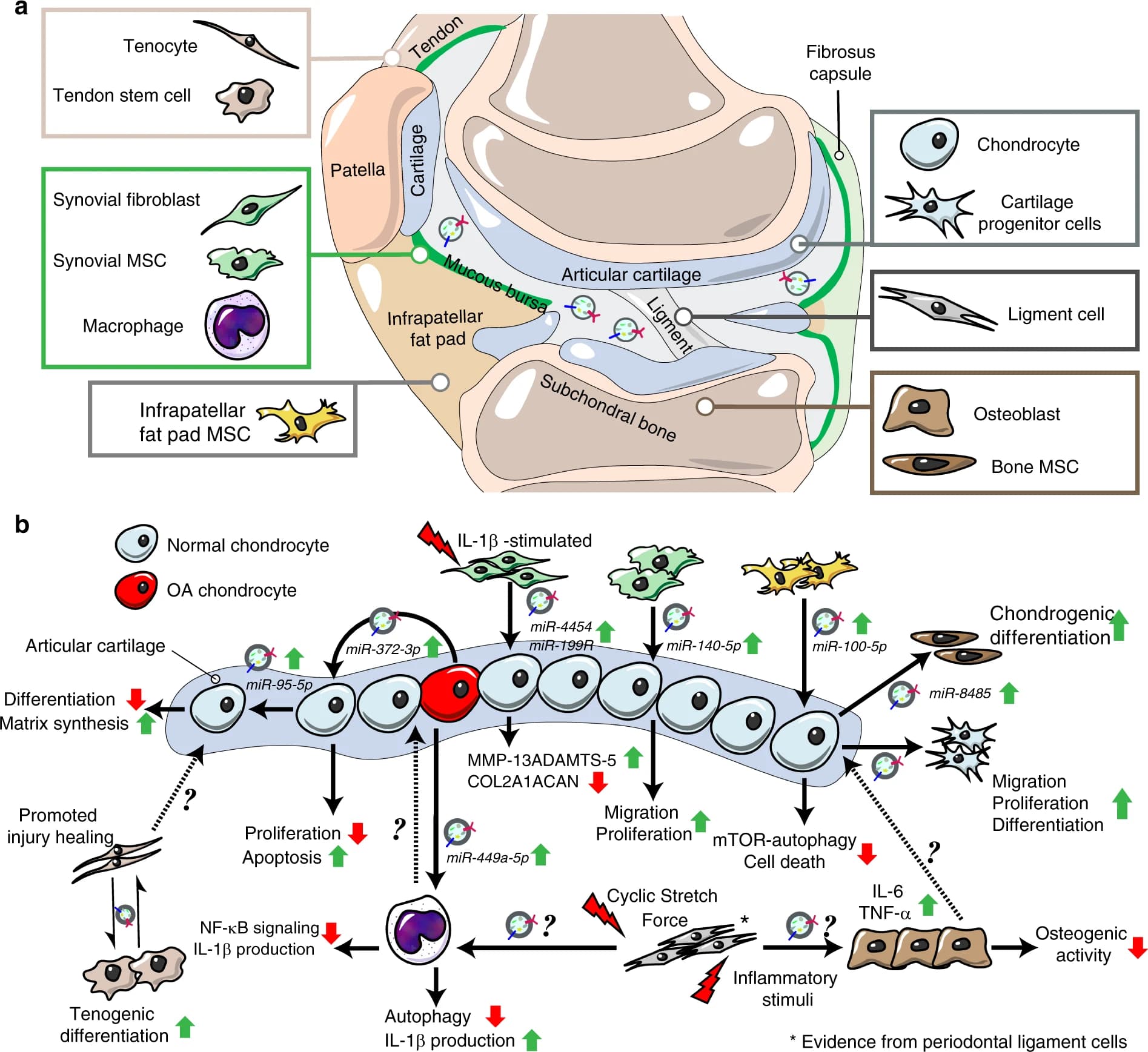Doctors treating osteoarthritis have reported improvement in some fraction (I have heard “around half” mentioned frequently) of cases by injecting stem cells extracted from the patient’s own adipose (fat) tissue into the joint cavity, where the stem cells differentiate and act to regenerate the damaged cartilage between the bones. In recent years, investigation of the mechanisms by which this might work has identified exosomes, which are defined as “membrane-bound extracellular vesicles (EVs) that are produced in the endosomal compartment of most eukaryotic cells” as a possible means by which the stem cell therapy operates, and the use of exosomes to treat a variety of degenerative diseases is an active area of research and a hot topic within the life extension and quantified self communities.
A long (8800 word) survey paper with 270 references published in Bone Research in 2020:
Ni, Z., Zhou, S., Li, S. et al. “Exosomes: roles and therapeutic potential in osteoarthritis”. Bone Res 8, 25 (2020).
provides an introduction to this research and the state of the art in exploring exosome therapy for arthritis. The paper is open access, and the full text may be read either on the Web via the title link above or via a PDF download. Here is the abstract:
Exosomes participate in many physiological and pathological processes by regulating cell–cell communication, which are involved in numerous diseases, including osteoarthritis (OA). Exosomes are detectable in the human articular cavity and were observed to change with OA progression. Several joint cells, including chondrocytes, synovial fibroblasts, osteoblasts, and tenocytes, can produce and secrete exosomes that influence the biological effects of targeted cells. In addition, exosomes from stem cells can protect the OA joint from damage by promoting cartilage repair, inhibiting synovitis, and mediating subchondral bone remodeling. This review summarizes the roles and therapeutic potential of exosomes in OA and discusses the perspectives and challenges related to exosome-based treatment for OA patients in the future.
This stuff is fantastically complicated and much is uncertain and unknown in this active research area. If you are interested in this topic, this paper is an excellent place to start. It concludes:
As an important intercellular communication mediator, exosomes greatly contribute to OA onset and progression and have shown strong potential for OA treatment. Exploring the detailed mechanisms of exosomes in OA pathological changes will help us to screen and identify potential therapeutic targets. Moreover, we need to optimize MSC-Exos [mesenchymal stem cell exosomes—JW] to improve their therapeutic effects on OA. Studies on the roles, underlying mechanisms, and diagnostic/therapeutic application of exosomes in OA are only beginning, and there are still many problems to be solved in this field. With advances in technology, we speculate that exosome-based treatment will be applied to OA patients in the future.
